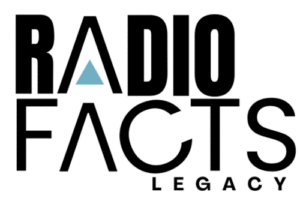Citing safety concerns, Starbucks will be closing 16 retail locations nationwide before the end of July, and according to interim CEO Howard Shultz, many more stores will also be closing.
In a posted video of a company meeting, Shultz is heard criticizing local, state, and federal officials for failing to fight crime and address mental illness. But he failed to mention how under the previous CEO Kevin R. Johnson’s leadership, the company had a racism PR nightmare after a manager in a Philadephia Starbucks called police and two black men were arrested for trespassing because they were in the store and didn’t buy anything.
The way the situation went down in Philly did come off as excessive and racist when the manager called the police on the two black men who didn’t buy anything, and one of them wanted to use the bathroom but was denied. The manager claimed asked the men to leave, but they refused.
Once the situation hit the headlines after the men were arrested, was relocated, but is it feasible for any brick and mortar business to pay rent and electricity then allow anyone to use it whether they patronize the business or not … at times for hours on end? You cannot be a consumer-based retail business AND a lter simultaneously.
The Catalyst to a Disaster Waiting to Happen
Starbucks panicked and made a rash and predictably disastrous decision. To open its doors and allow everyone access to Starbucks, whether buying the product or not, including using the bathrooms.
This decision was unfair to paying customers and even more unfair to employees who were now in charge of cleaning the bathrooms where many homeless people were bathing in the age of COVID nonetheless.
Starbucks can blame authorities and officials all day for the safety concerns, but it’s also on Starbucks. As a former frequent visitor of the store to catch up on work and to use his laptop, TheIndustry.biz CEO Kevin Ross states, “I can attest to how it became increasingly more uncomfortable to spend time there with all the homeless people taking up all the space with suitcases, shopping carts, and charging devices. You never know when they will start yelling or have episodes, and I’ve seen it happen. It’s a huge problem for Starbucks but one that they opened the door to.”
Homeless People Do Need More Outlets
Suppose the state and authorities are responsible for anything. In that case, it’s for not having enough outlets for homeless people to meet their needs, but Starbucks opened the door to this problem in their retail outlets by making them unsafe for employees and customers.
“I stopped to get coffee recently in Woodland Hills, CA, and a homeless man came in and was screaming at everybody, he freaked everybody out, and they had to close the store for an hour to allow everyone to calm down,” said Ross
It’s OK for homeless people to have access to resources and to be protected but it’s also OK for paying customers to have the same rights.
Recently the chain was giving out water in regular branded Starbucks cups to numerous homeless people who requested it. The cost of giving away that product has probably been passed on to paying customers with a recent price increase. A Venti Iced Coffee is shy of $5.00 a cup now, which is high for a national chain.
Is Starbucks a Retail Chain or a Shelter?
Many stores are leaning towards the drive-thru and order online concepts now and have closed off the access to plugs which has curbed the homeless population a bit, but it’s still unfair to paying customers who want to charge their devices while they work.
And there is no way Starbucks can rescind its decision to have the store’s access open to all; that would be another PR disaster.
“It has shocked me that one of the primary concerns our retail partners have is their safety,” Schultz can be heard saying. “America has become unsafe.”
To remedy the safety concerns, Starbucks will be closing six stores in the Los Angeles area and 10 locations in other major cities.
The Los Angeles-area stores slated for closure are at:
- Hollywood Boulevard and Vine Street
- Santa Monica Boulevard and Westmount Drive in West Hollywood
- 1st and Los Angeles streets (inside the DoubleTree hotel)
- Hollywood Boulevard and Western Avenue
- Ocean Front Walk and Moss Avenue in Santa Monica
- 2nd and San Pedro streets
Several listed stores above, like the one on Hollywood Blvd and Western, are highly uncomfortable and unsafe for paying customers and employees.
Starbucks will have to reinvent the entire experience, and perhaps leaning towards a drive-thru and order online concept is the best idea for now. They may even have to shut down the seating areas in their stores nationwide, which would be drastic but perhaps necessary.



